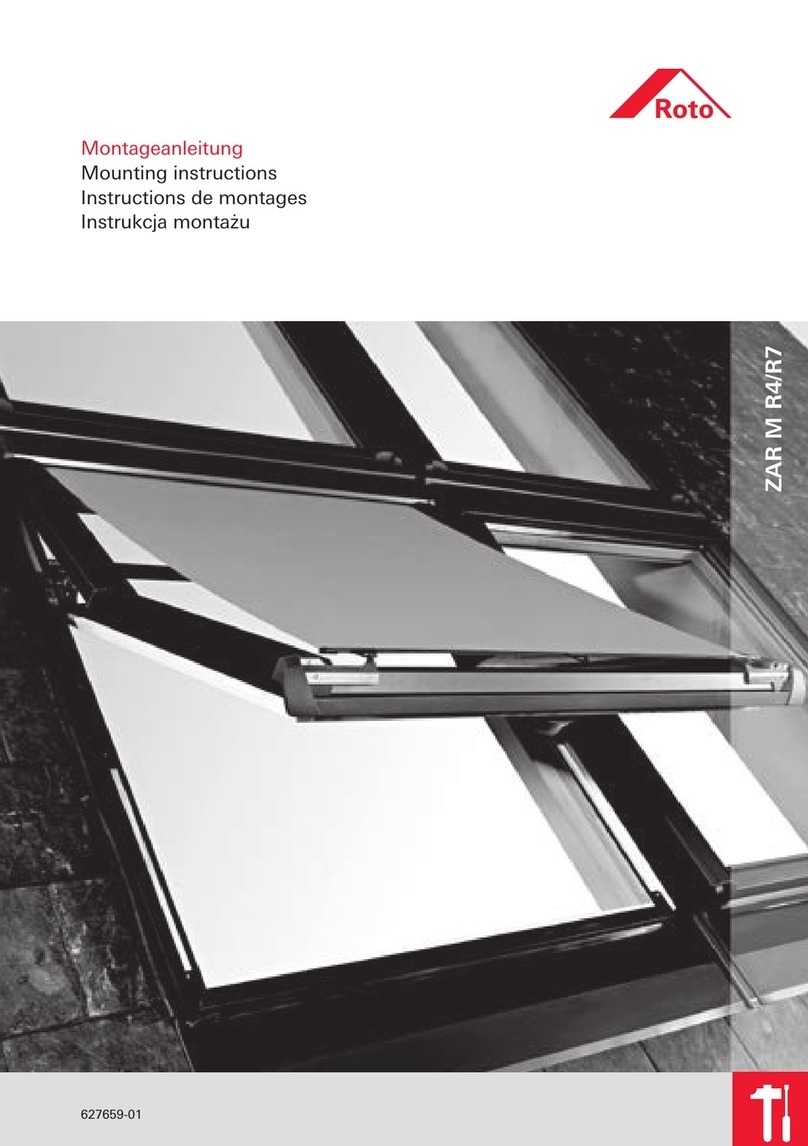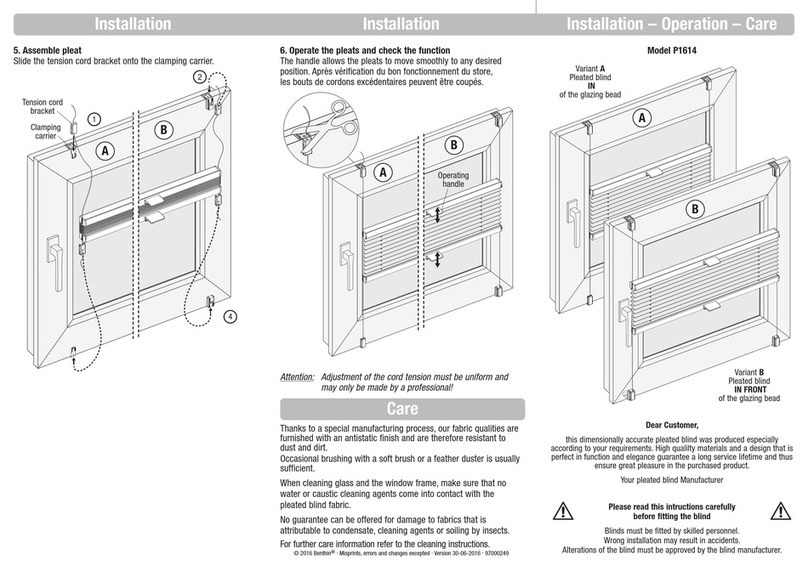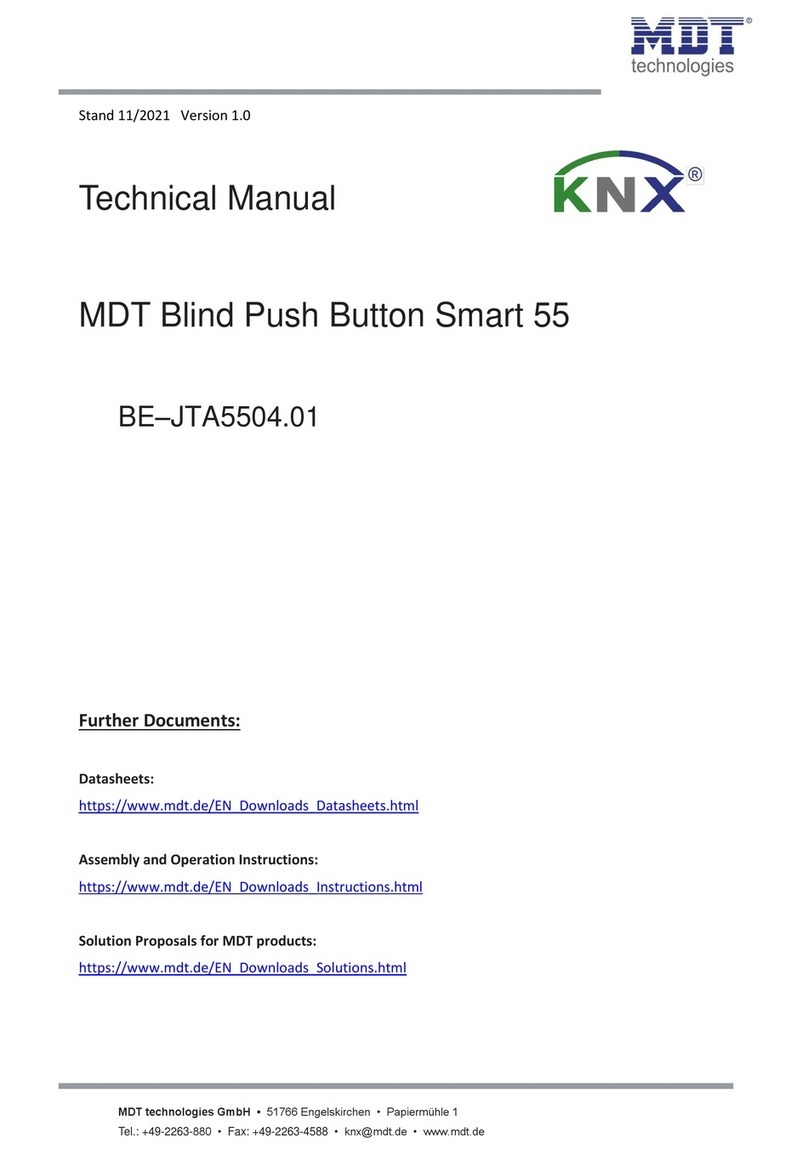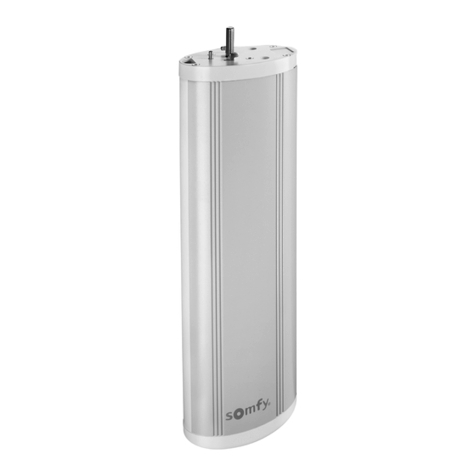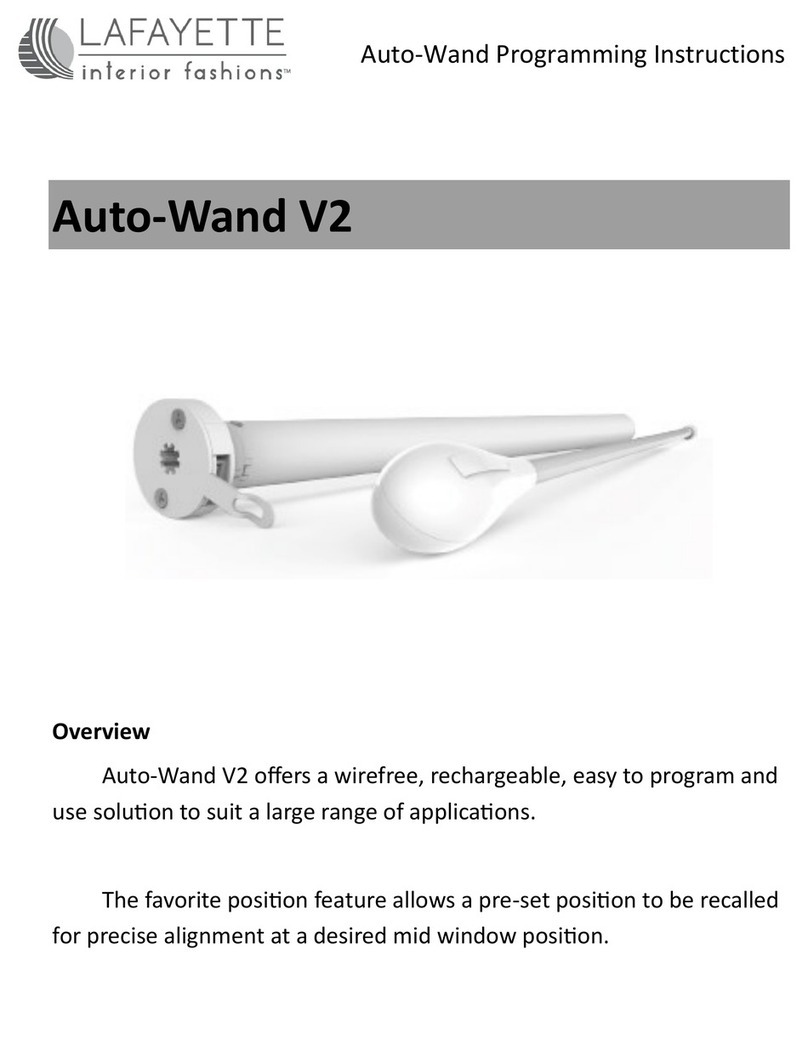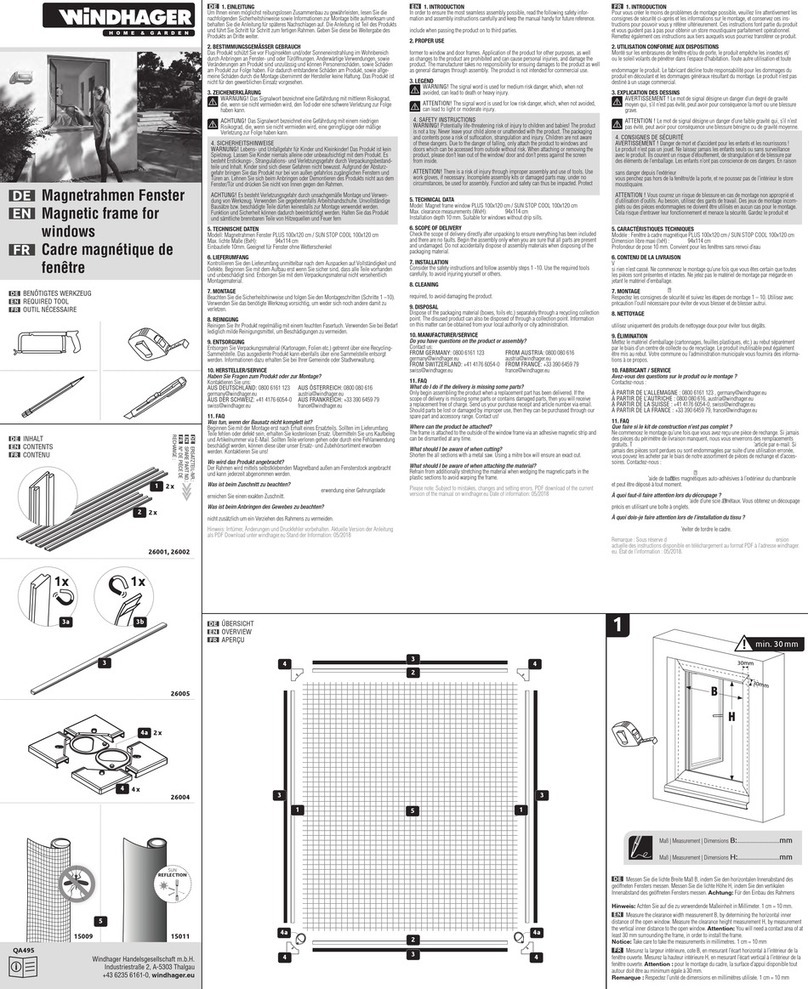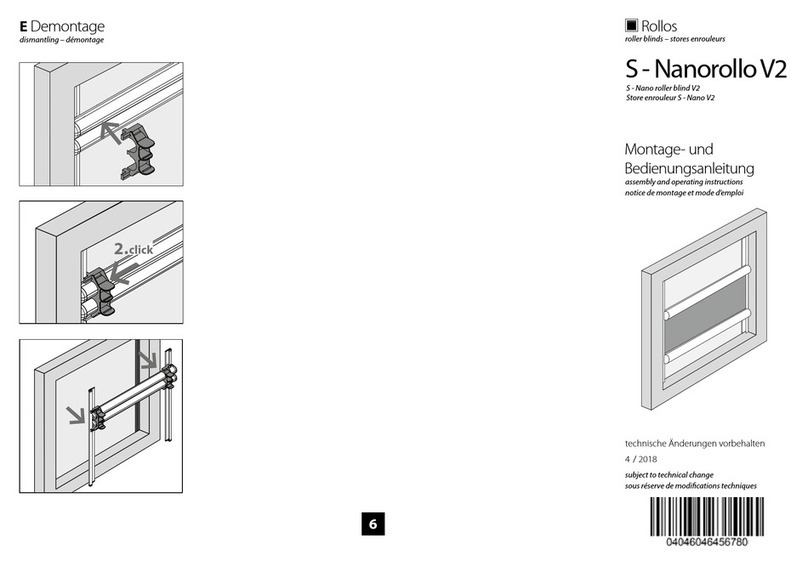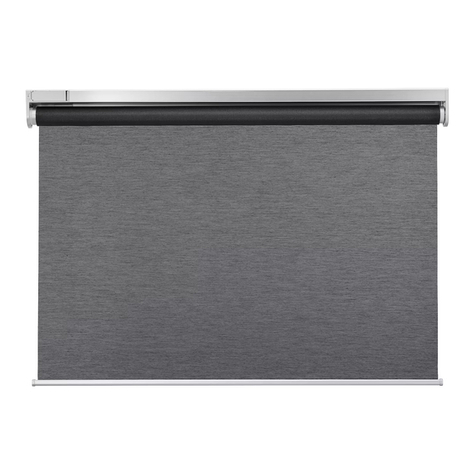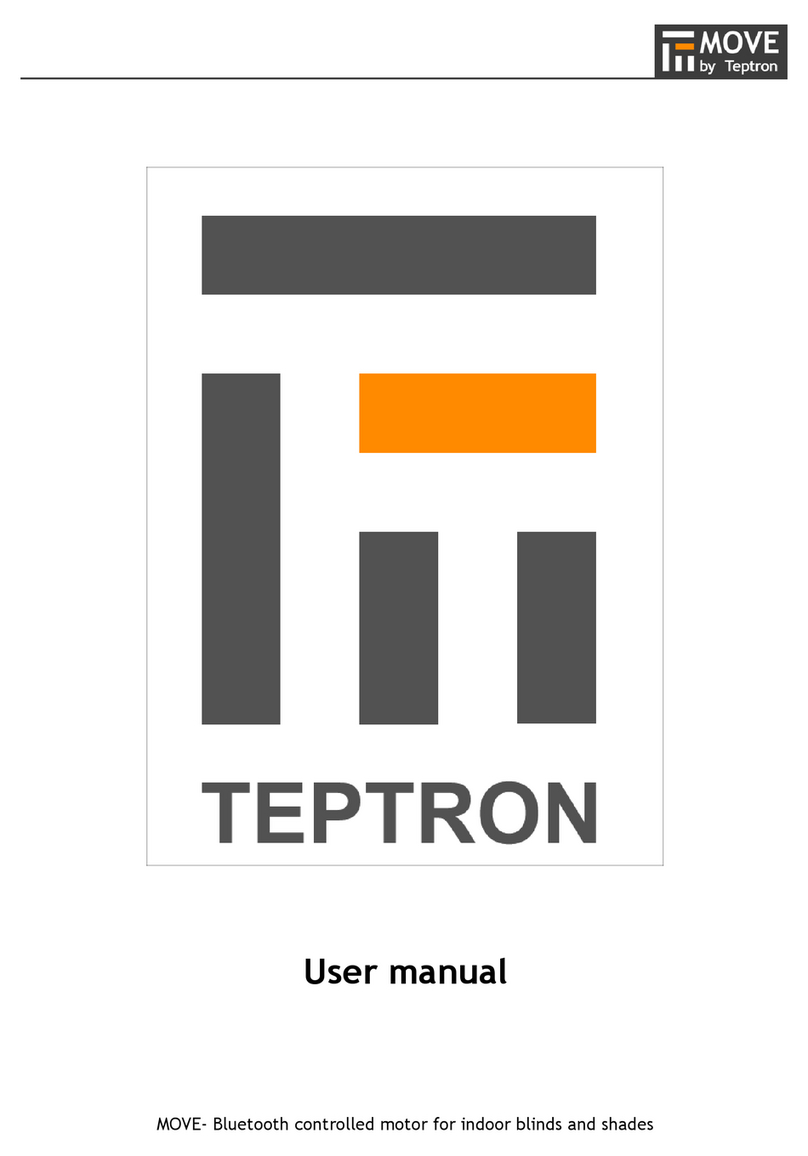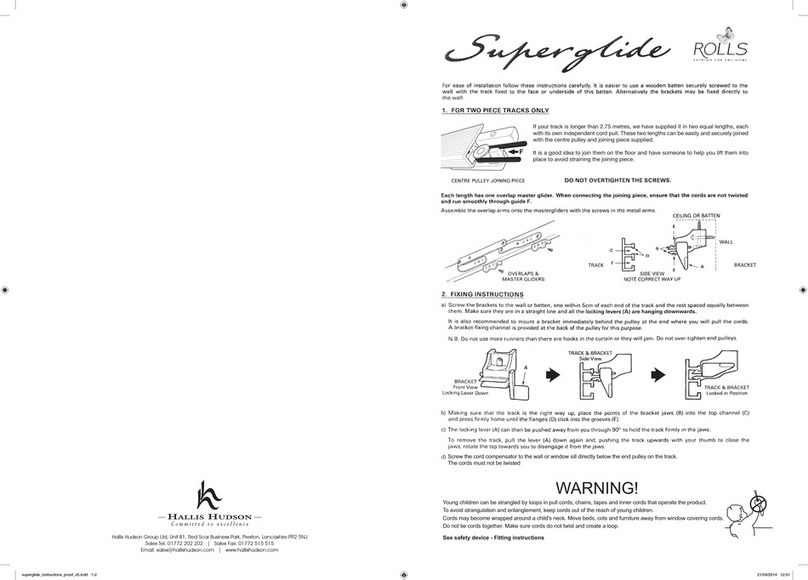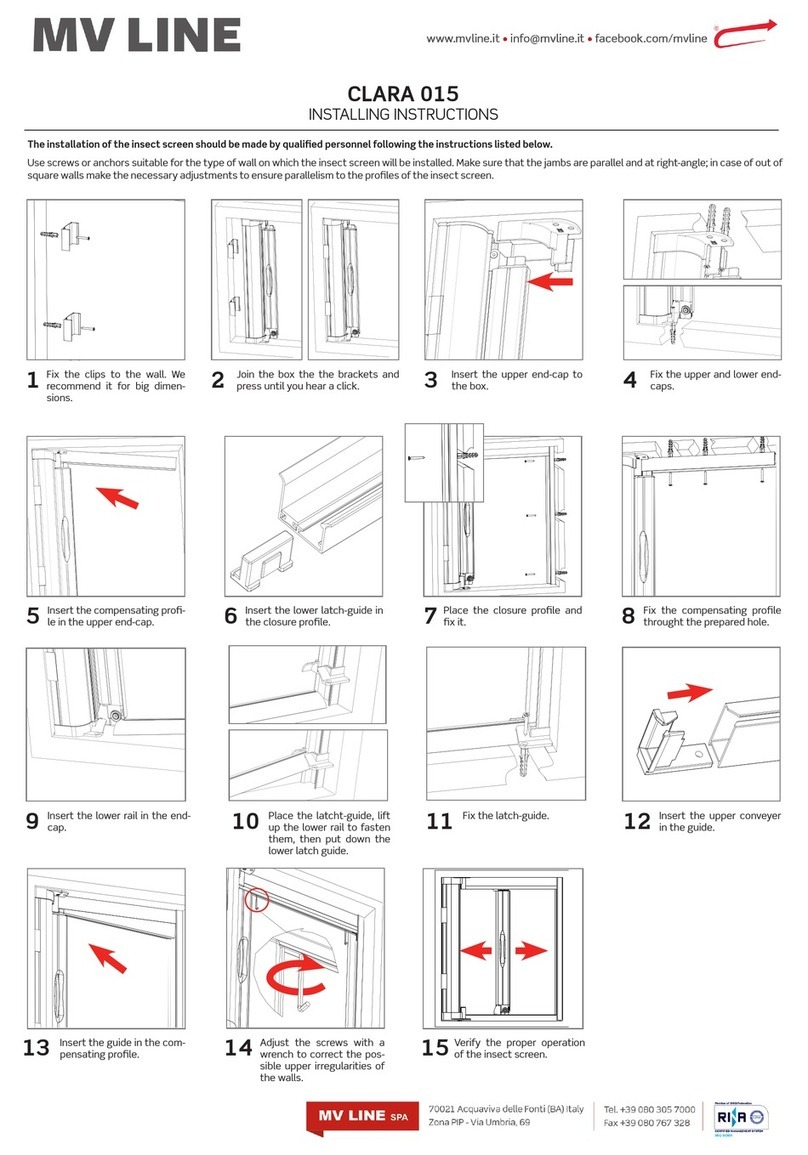
Classic Collection Installation Instructions 3
BACK
Traditions Headrail: Installing the Headrail
Check the headrail to be sure nothing is tangled. Be sure to keep the top slat from
sliding into the brackets. On inside mounts if a valance is being used, see instruc-
tions below before installing the headrail.
• If support brackets are used, slip the headrail into the lip of the bracket and
push into place.
• If supports are not used, slip the headrail into the brackets and snap safety
locking cover shut.
• If the blind is loose in the brackets, open the end brackets and expand the
end lock tab(s) on the headrail by using a screw driver.
• If the blind is too tight, compress the tab by pushing it in on one or both sides.
Echelon & Integra Headrails: Mounting Inside or Outside
Position the two end brackets on the mounting surface so that they
will be located between 2” and 6” from the ends of the headrail. If
more brackets are required, space additional brackets evenly be-
tween the end brackets. Do not position any bracket directly above a
ladder, cordlock or wand tilter. Allow 1” space on the side whenever
possible.
Echelon & Integra Headrails: Securing the Brackets
Inside Mount Bracket Attachment
A minimum casement depth of 7/8” is required for inside mount. A depth
of 1 3/4” is required to fully recess the blind.
• Attach the installation brackets with two screws through the two
holes in the top of the brackets.
• Be sure the front edges of the brackets are aligned before tightening
the screws.
Outside Mount Bracket Attachment
A at surface of at least 5 /8” high is required for bracket attachment.
• Attach the installation brackets with two screws through the two
holes in the rear of the brackets.
• Use a level to check that the tops of the brackets are aligned at the
same height before tightening the screws.
Echelon & Integra Headrails: Installing the Headrail
Be sure the bracket tab is fully extended to the head of the screw.
• Place the headrail in the brackets so that the front lip rests on the bracket
hook and the rear bottom corner rests on the tab.
• The blind should hang on the brackets without being held in place.
• Tilt the headrail up and push it back until it is ush against the top of the
installation brackets. Tighten the locking screw on all brackets to hold the
blind securely in place.
• To remove the headrail, reverse installation procedure. Loosen the locking
screw, tilt the headrail, and lift off the bracket hook.
Traditions Headrail: Installing the Valance
The Regal valance is available by request for Traditions 820, Traditions Light-Ban
and Traditions Micro blind. A Two slat clip-on valance is available by request for Tra-
ditions 822, Traditions 620 and Traditions 622 blind.
• Install the valance with the clips provided. For inside mount blinds, attach the
valance clips to the headrail before installing the blind.
• If a return is needed, the valance can be bent to form a return.
• Tilt the Regal valance will rest on the bottom groove and snap onto the top two
grooves.
• Slide the slats for the Two slat valance into the grooves on the valance clips.

